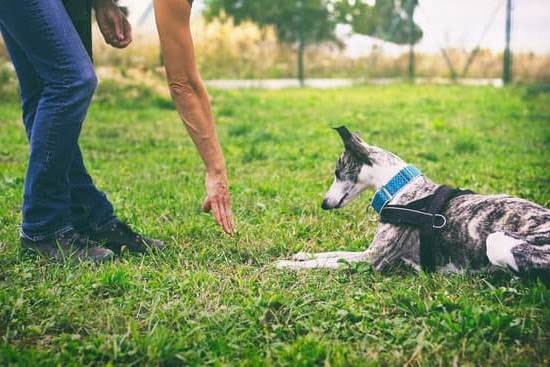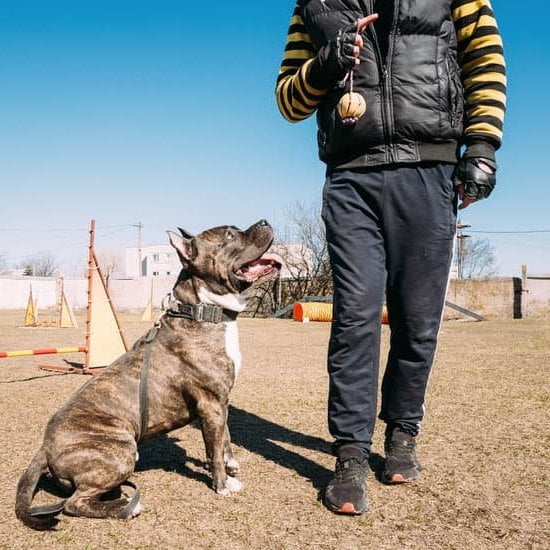Introduction
Dog bell training can be an invaluable tool for dog owners. The method involves teaching the dog to use a bell or other similar signal device each time they need to go outside. This avoids the hassle of having to constantly monitor them, as they will learn that ringing the bell signals they need to go outdoors. It is also beneficial in terms of communication and setting boundaries, as it helps form positive associations with going outside such as praise and rewards. Furthermore, it serves as a safety measure and could potentially save your pet’s life if they ever get loose; Ringing the bell can be heard from some distance and alert anyone nearby that your dog needs help finding their way home. To successfully train your dog on how to use bells, there are several things to consider:
Choosing the Right Bells for Your Dog
The first step in teaching your dog to use bells is to choose the right type of bells. If possible, bring your pup along when you’re picking out a bell! Make sure to select bells that are sized appropriately for your pup and have an inviting jingle sound. You can even purchase a variety of sizes and tones so that you can experiment with which one works best for your pup. Once you have the bells, hang them on a doorknob or door handle where your pup will be able to access them easily. Now comes the fun part—training your pooch how to use it!
Establishing a Clear Routine for Using the Bells
Training your dog to use bells is a great way of communicating their needs both inside and outside your home. While it requires patience and dedication, following these steps can make the process easier.
First, start by selecting a bell specifically designed for dogs. Hang the bell near your door or on the handle of the back door if you have one. Make sure the bell is at an accessible height for your dog, typically between paw and knee-level. Securely attach it to a door frame or wall so it cannot slip off onto the ground when pulled on.
Next step is to encourage and reward correct usage from day one by praising verbal affirmations like “good job” or “yes!” Continue doing this each time your dog touches the bell so that they understand using the bell means approval from you. You can also provide treats as rewards for successes in order to strengthen the connection further.
Practice with trainers or other people who can help you watch for signs that your pet has made progress with understanding what is expected of them when using a bell. Developing clear patterns will help reinforce that this behavior is expected every time your pup wants something from you, whether it be going out for potty time or wanting fun treats before bedtime. Lastly, never scold them if they don’t press enough rings on the bell; instead continue ensuring positive reinforcement until they are consistent in having success with each attempt to communicate with you via bells.
Strategies for Encouraging Proper Bell Use
Step 1: Hang the bell near the door.
Marking the spot in front or beside the door with an X will help your dog understand where to touch the bell each time it wants to go outside. Make sure that you place the bell at your dog’s mouth level.
Step 2: Give positive reinforcement when your dog touches the bell. Whenever your dog does make contact with the bell, give them verbal praise and a treat for their behavior. Doing so will make associating ringing the bell with rewards easier for them.
Step 3: Make ringing the bell a habit by practicing everytime it’s time to go outside. When you take your pup out to use the bathroom, make sure they always ring that bell first! It may take some guidance on your side but eventually they will make it a habit on their own.
Step 4: Use a cue word in association with ringing the bell. Choose one simple word like “Outside?” or “Let’s Go!” and say it directly before you expect them to trigger that bell ring. Over time, they will develop an understanding of what each word means, making their necessary actions more instinctive than mechanical.
Step 5: Praise and reward when your pup rings the bell correctly without needing cues from you. This shows that they are properly understanding what is expected of them and have made progress with their training! Providing positive reinforcement here is necessary just as much as ever because assurance is key in helping them learn further behaviors faster and better over time.
Showing Proper Discouragement When Dogs Ring Bells Incorrectly
When training your dog to use bells correctly, it is important to give them feedback on incorrect attempts. This should be done in a time frame which the dog understands is immediate and directly linked to the behavior. Always be consistent when displaying displeasure; maintain stern facial expressions, body language and voice tones each time your dog rings incorrectly. For example, when teaching them to ring on command, say “no” firmly and make sure you have their full focus before redirecting with a new command such as sit. Make sure that the sound of the no is not too loud or aggressive, but just stern enough so they can understand they were incorrect. Remember to always praise with petting or love when they perform correctly as well. This helps build positive reinforcement so they can better associate correct behavior with rewards instead of punishment.
Suggestions for Overcoming Bell Training Challenges
To get your dog to understand how to use bell training can sometimes be tricky. Here are a few tips for overcoming some of the challenges you may encounter when teaching your dog how to use bells:
• Use treats and rewards as an incentive, such as providing your dog with a treat each time they successfully ring the bell. This will help encourage them to repeat the behavior.
• Make sure your dog always recognizes the sound of the bells. If they don’t recognize it, it will be harder for them to understand what they’re supposed to do. You can do this by introducing the bells one at a time and playing different tunes so your pup learns to recognize them all.
• Do not over-train your dog with practice sessions or commands–instead, mix things up and keep things positive and engaging for your pup by offering a variety of rewards during short training sessions. The goal is for them to learn in an enjoyable way and feel comfortable going through the motions of ringing a bell instead of feeling overwhelmed or discouraged from overdoings of practice sessions or rigid commands.
• After each successful session have some downtime for your pup–rewarding but also relaxed time for them afterwards will reiterate that ringing the bell is fun and desirable, creating a positive association in their mind.
Benefits of Dog Bell Training
Dog bell training can be an effective and simple way to train your pup to communicate when they need, or want, to go outside. There are a few different benefits that come with teaching your pet this useful skill.
First of all, it avoids the inconvenience of having to constantly check on your dog to see if they need out. By having them ring the bells you will always know when your dog needs to go out and can take them out without delay. This makes potty training much faster and easier, no matter how old/young your pet is.
Another advantage is that it reduces the risk of accidents in the house due to less opportunities for your pup being able to wander around for extended periods of time unsupervised, looking for places and objects they should not have access too.
Finally, doggy bell training may decrease barking at doors since they will already have been trained that ringing the bell means that they may be let out soon. Additionally, teaching such an “intelligent” behavior shows your pup you take their needs seriously as well and can help build trust between pet parent and pooch!
Conclusion
When teaching your dog to use bells to communicate with you, consistency and patience are the keys to success. It is essential that you stick to a consistent training schedule that allows your dog time to practice what they’ve learned so far and gain momentum as they progress in their education. Additionally, remember to reward your pup for following commands properly and pick up praise every time he or she makes progress. Finally, try not to stress if things don’t work out perfectly during training sessions – just remind yourself that training involves learning and mistakes happen along the way. With a positive attitude and consistent teaching methods, you will be able to train your pup in no time. Good luck!

Welcome to the blog! I am a professional dog trainer and have been working with dogs for many years. In this blog, I will be discussing various topics related to dog training, including tips, tricks, and advice. I hope you find this information helpful and informative. Thanks for reading!





